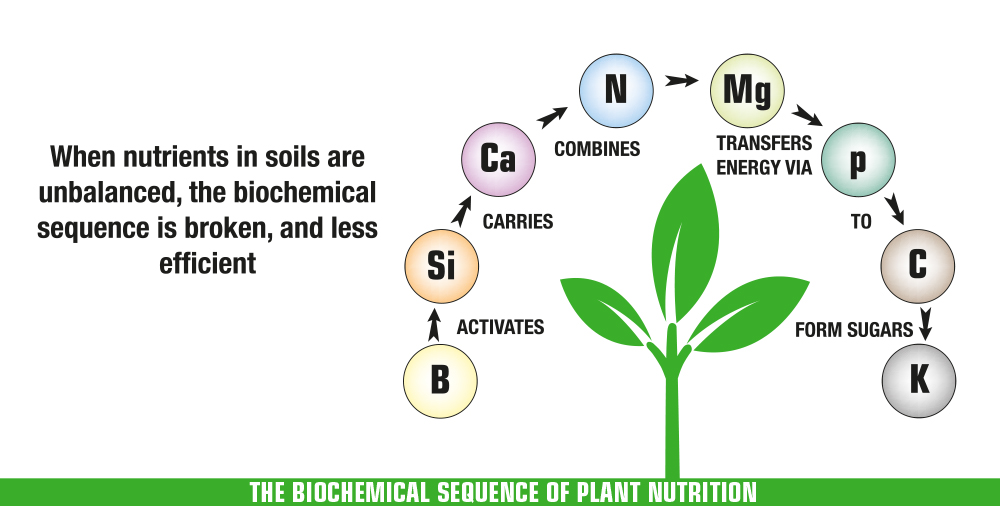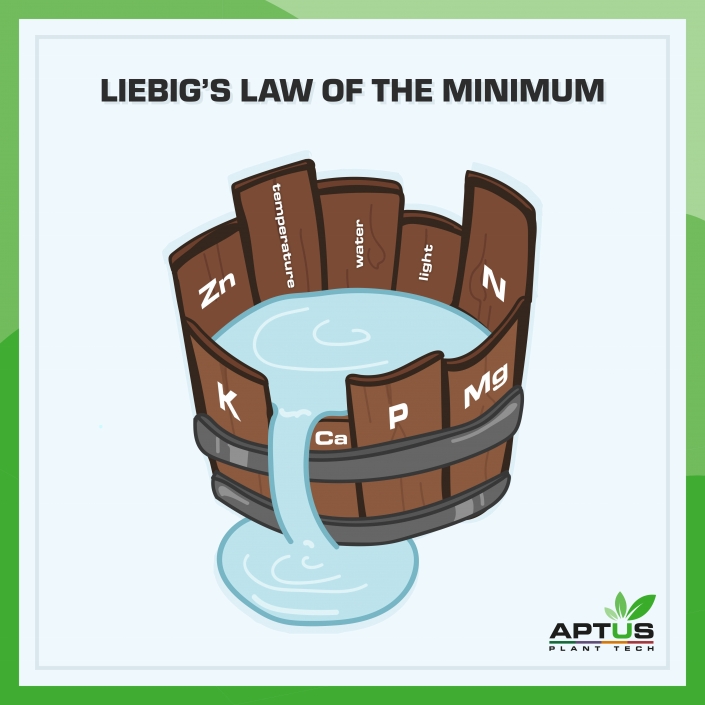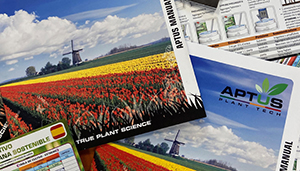Biochemical Sequencing 101
Traditional agriculture operates by looking at plant like they are machines. We tend to think a little different at Aptus. We believe we should look at plants as living creatures, just like you and me.
Plants possess all the fundamental biological systems humans and animals have. Plants have a nervous system, circulatory system, reproductive system, immune system, etc. We need to understand that plants are not machines that can be bent to our will, but rather delicate natural systems designed to work and behave in specific measurable and predictable ways. We will never be able to optimize yield, quality, cost and effort without that paradigm shift.
Some years ago, Mr. Hugh Lovel (supported by the work of many other intelligent people) began to realize there was an obvious hierarchy of how elements worked in living organisms. One thing had to occur before the next thing could happen, and so on down the line in a sequence.
Eventually he developed his theory of this hierarchy of elements, which he called this “The Biochemical Sequence (of Plant Nutrition)”.

The biochemical sequence can be hard to understand so for the sake of this article we’ll use a (over)simplified and summarized version. If you feel you understand this version, you may want to dive a little deeper and look up Hugh Lovel’s own article on the subject.
Hold on to your hats, here it goes! The plant biochemical sequence begins with:
1 – Boron: Boron is the gas pedal of the sequence. It creates sap pressure which allows vascular fluids to move up and down your plant. It also activates Silicon – an often overlooked element in plant nutrition, but most definitely an essential one.
2 – Silica/Silicon: Boron provided the gas to move, but without a good highway system you would still get nowhere. Silicon provides the highway that facilitates efficient transport of all other nutrients.
3 – Calcium: Now we have gas and a highway system, we need something to travel our highway with. That’s where Calcium comes in. Calcium is the truck that travels on the silicon highway, collecting and carrying the nutrients that follow in the sequence.
4 – Nitrogen: Our Calcium truck holds precious cargo, our Nitrogen. Nitrogen is the basis of amino acid formation, protein chemistry and DNA replication. Once Nitrogen enters the equation, all sorts of proteins, enzymes, and hormones are produced, and other complex processes are set in motion.
5 – Magnesium: When the calcium truck arrives at its destination, the next thing on the agenda becomes the harvesting of energy. Plants do this with their chlorophyll, which ‘catch’ the energy from the sun in the process we know as “photosynthesis” (you know, our source of oxygen). Magnesium is essential in photosynthesis, and can be looked at as the power plant, allowing chlorophyll to function.
6 – Phosphorus: After the chlorophyll caught the energy, this energy needs to be put to good use. As you may remember from high school biology: In photosynthesis, light, carbon dioxide and water are used to produce carbohydrates (sugars). Phosphorus plays an essential role here, as it allows an energy transfer from the chlorophyll. In this regard, we can look at Phosphorus as the gas station providing chlorophyll a place to store energy during photosynthesis.
7 – Carbon: Carbon, as Carbon dioxide (CO2), combines with water, making carbohydrates (sugar) and releasing oxygen.
8 – Potassium: And finally the produced sugars need to find their way to wherever they are needed most. Potassium is the tour guide in charge of just that!
LIEBIG’S LAW OF THE MINIMUM
Plants will naturally follow this sequence, so it’s in our best interest to familiarize ourselves with it. It’s important to understand that a plant can only perform as well as their most deficient nutrient allows them to. Without the earlier functions, the later functions won’t work optimally. This is easily illustrated in Liebig’s “Law of the Minimum”.

Liebig’s law states that the growth of a plant is not dictated by the total resources available, but rather by the scarcest resource. This is often illustrated with a barrel with unequal staves. The water holding capacity of the barrel will always be limited by the shortest stave, just like the growth of your plant will always be limited by the nutrient (or other factor) in the shortest supply.
The APTUS range of nutrients was developed to work with nature, and it follows the biochemical sequence of plant nutrition as proposed by Hugh Lovell. We think the only way to optimize our grows is to work with nature, and it follows its laws.
Lastly, thanks to Carl Venezia from soilnerd.com for the inspiration for breaking down the Biochemical Sequence!





